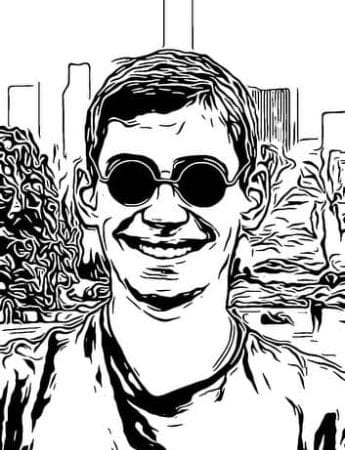 My knee scraped on the curb as I knelt beside Naubelt Saintil’s taxi, but I wouldn’t notice the bruise until later. I was fixated on his story, and struggling to capture as much of it as I could in my reporter’s notebook. I wrote furiously, perspiring in the July sunlight. My journalistic senses were taking in his words, the frayed French Bible on his lap, and the multicolored idol of the Virgin Mary swinging from his rearview mirror.
My knee scraped on the curb as I knelt beside Naubelt Saintil’s taxi, but I wouldn’t notice the bruise until later. I was fixated on his story, and struggling to capture as much of it as I could in my reporter’s notebook. I wrote furiously, perspiring in the July sunlight. My journalistic senses were taking in his words, the frayed French Bible on his lap, and the multicolored idol of the Virgin Mary swinging from his rearview mirror.
Moments earlier, I had been wandering the unfamiliar streets of Evanston, Illinois, searching for a compelling feature article for my journalism class. The assignment, given that morning, was to report on an undiscovered niche in the city; my first draft would be due in eight hours.
A group of hair salons, located in a row, caught my eye: could there be a story here about business competition? I stepped into the first salon, ringing the bell as I entered, and found myself being sized up by a group of sharp-eyed Midwestern women. A teenage boy with a notebook and a backpack: I wasn’t there for a blow-out. One hairdresser, with bright blue eyeshadow and glossy black hair whipped into a halo around her head, asked, “Could ya come back next month?” My other inquiries for an interview were met with an echo of blunt refusals.
With just a few hours left, I returned to the street empty-handed. When I am on a deadline, I have no time to waste. I needed a story.
I scoured my surroundings, pausing to survey the street around me for something out of place, a hint of anything unusual.
As I passed the local Hilton I saw a line of idling taxis, each with an equally idle driver. Had they been put out of business by ride-sharing apps like Uber? Cautiously, I approached the first driver in the line. She frowned, answered a few questions curtly, and looked away. Undeterred, I moved to the next unenthusiastic driver, and the next. Still, there had to be something here, and I was going to find it.
Then I met Saintil.
The rumble of his taxi’s engine melted into the faint radio static. He returned my greeting with a resonant Haitian accent. “Parlez-vous français?” I asked, to his surprise. “Oui,” he said, sitting up in his seat and grinning. Saintil and I spoke for a few minutes in French, as I tried to establish the rapport vital to a good interview.
Switching to English, Saintil told me about his children, their needs, and his worries about finding a new job at the age of 60 as his business stagnates. He spoke of days when whole mornings would pass by without a customer, and of hotel guests who wait an hour for Ubers instead of using his available taxi.
I interviewed other drivers, including a Nigerian-American real estate agent and father of five, and a quiet, middle-aged single mother worried about supporting her family. One driver told me he had been on the streets since before sunrise, and had yet to find a passenger. There was a trend appearing here. I knew I had found a story.
I returned to class that evening with a notebook filled with the vibrant stories of once thriving drivers, who are now struggling to survive. I witnessed the human side of a collapsing industry. With their life experiences in my voice recorder and notes, it became my journalistic duty and privilege to make their stories tangible; their struggles and successes read, recorded and remembered. Though Saintil thanked me when we finished our interview, I realized that I was more grateful to him, for giving me, and the world, his story.
